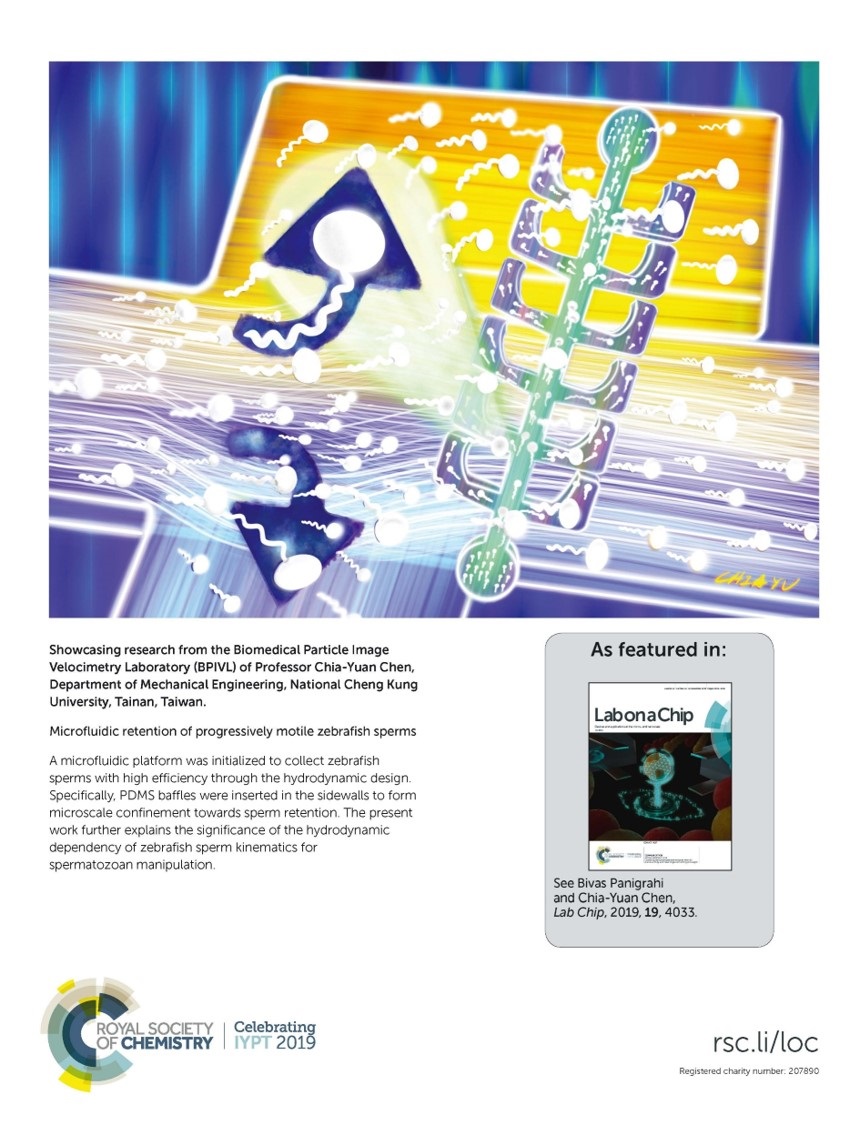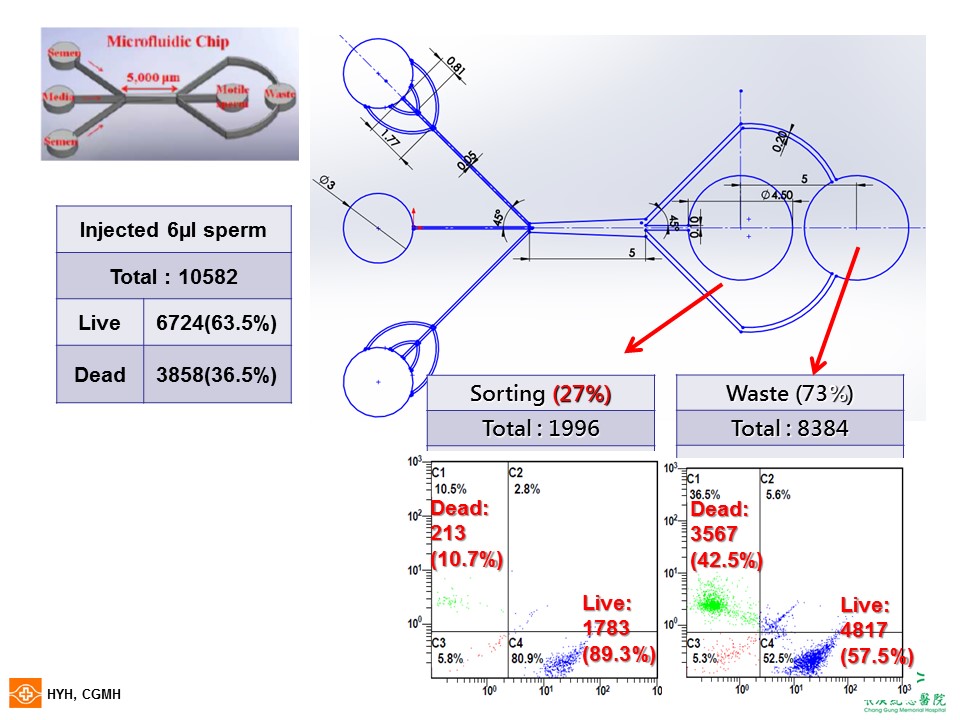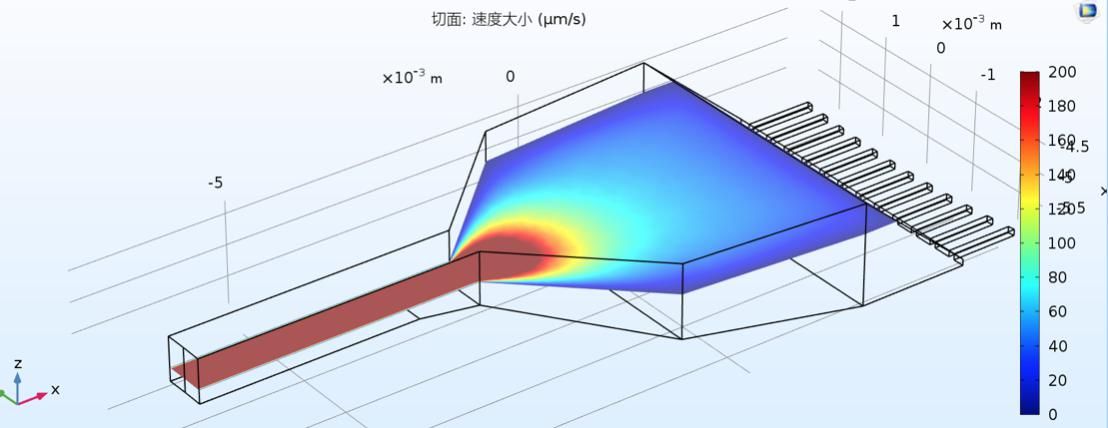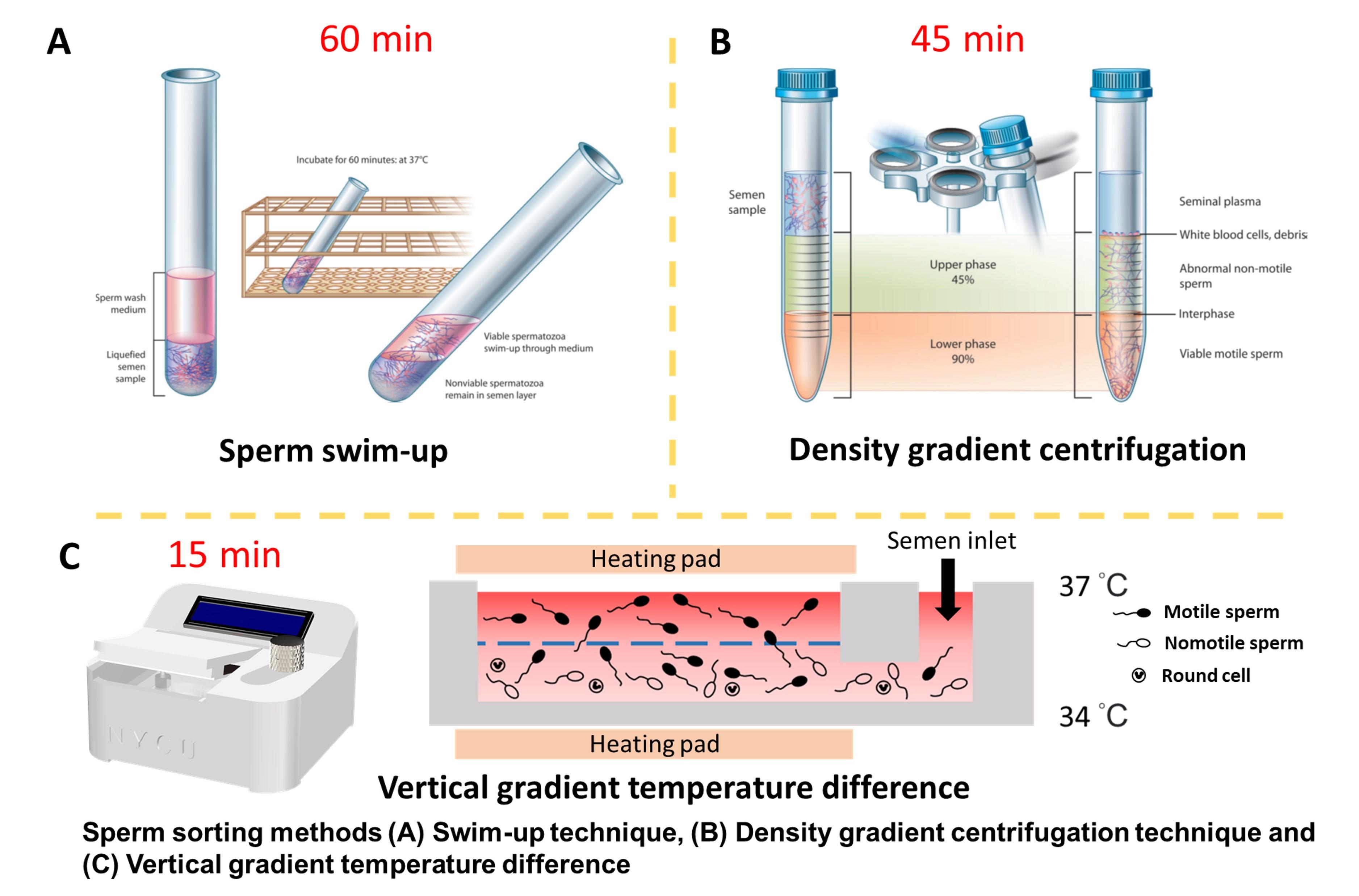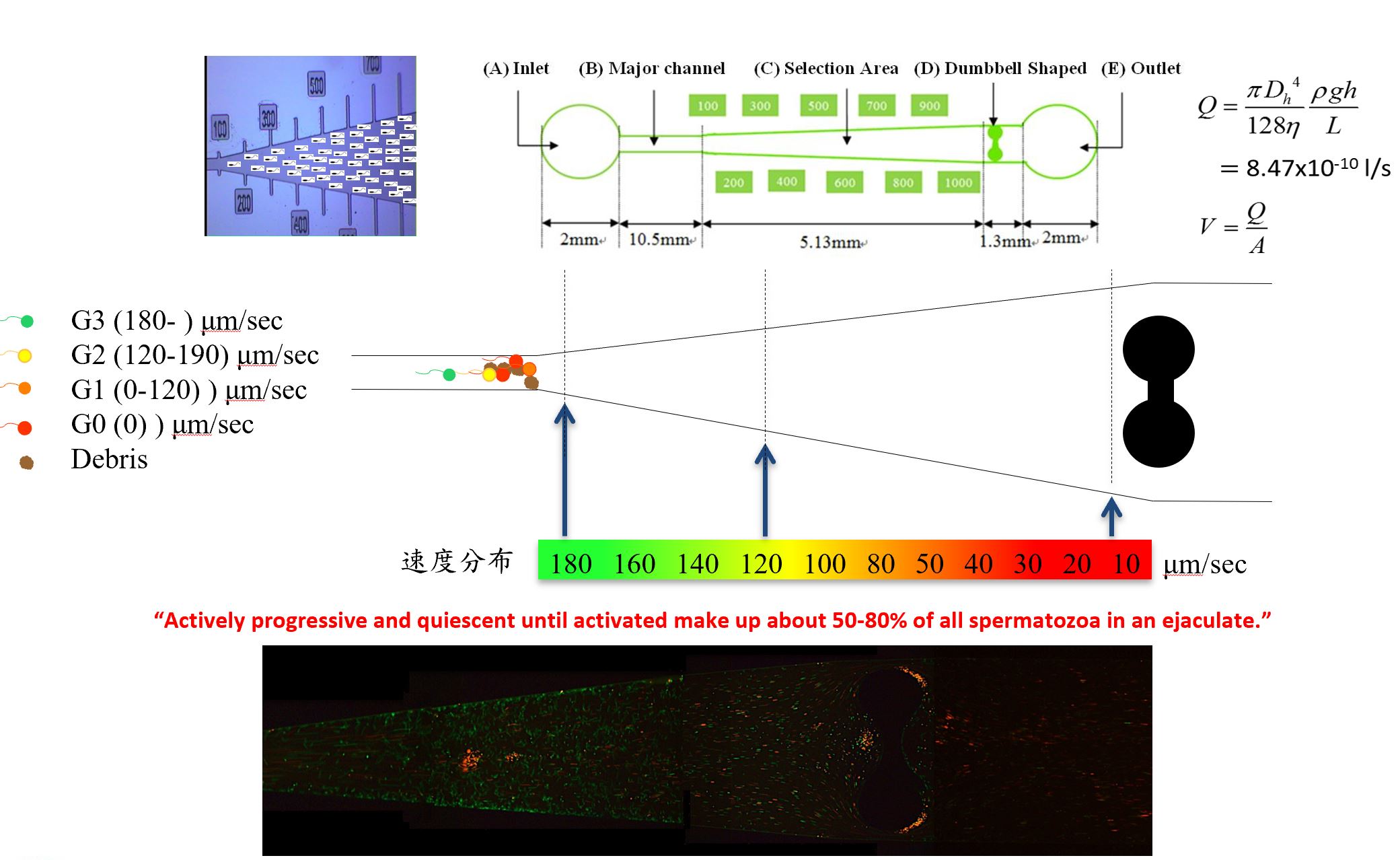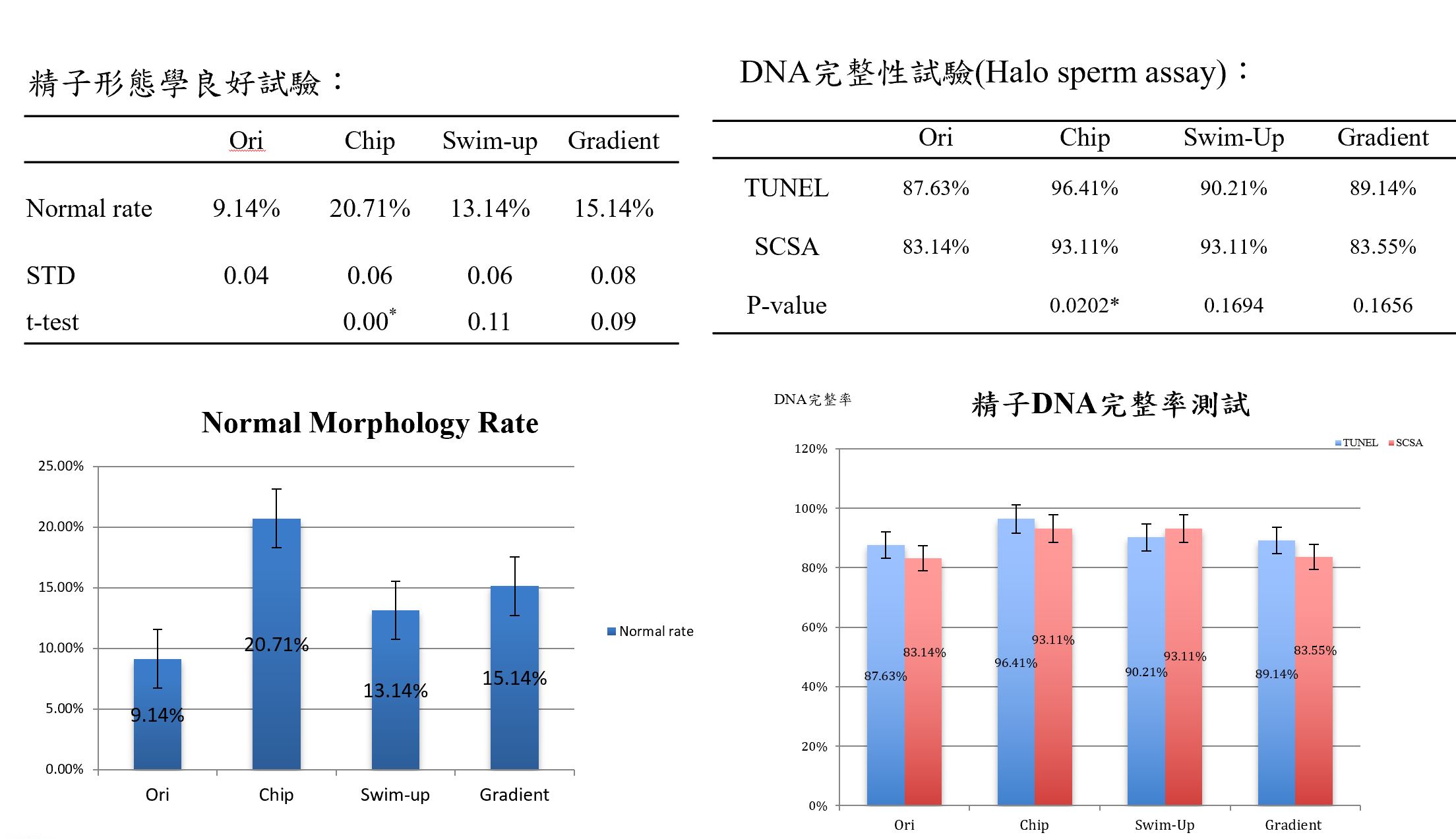| Technical Name | High Clinical Applicability Microfluidic Bio Chip System for Assist Artificial Reproductive Treatment | ||
|---|---|---|---|
| Project Operator | Taipei Medical University | ||
| Project Host | 潘力誠 | ||
| Summary | The invention is a microfluidics chip design that can serve as sorting mean to be used for the collection of motile sperm in Artificial Reproduction Technology (ART). Based on a progressive enlargement design, our chip design is built around sperms’ intrinsic swim-against-flow property therefore can sort sperm that swim against a preset velocity threshold. Meanwhile, debris and slower moving sperms will move in the direction of incoming flow stream towards a downstream waste reservoir. Our previous research results had showed that the standard sorting process required each time is effective (<20 min), and is agreeable with clinical demand for a higher sperm density (ours’ > two-fold increase), as well as a higher sperm mobility (ours’> three-fold increase in percentage of higher motile head counts from CASA rated sub-group with VCL>120 μm/s). Moreover, since the channel structure is a glass-based design, therefore it is now compatible with all optical/fluorescence sperm-imaging tools. |
||
| Scientific Breakthrough | The invention employs innovative micro machined fabrication processes and microfluidic channel design to sort and enrich for highly motile sperms from original semen samples without centrifugal pre-processing. The combined effect of a velocity threshold and spacer design has make possible the dual condensation of sperm density and sperm motility, without resorting to staining or further sperm manipulation. Thereafter, when compared to tedious, density gradient separations, our flow channel design can not only offer a more efficient, cost-effective mean to obtain high quality spermatozoa, but are also able to provide a compatible chip model to match easily with current computer based sperm analysis system such as IVOS from HAMILTON THORNE without further modification in original holder. |
||
| Industrial Applicability | Current sperm screening methods before in artificial fertilization procedures are mostly based on sperm motility (swim-up) or sperm density (centrifugation); however, the long handling processes expose spermatozoa to varying buffers and consequential fluctuations in osmolality and pH, leading to stress sperm membrane, generate ROS, and DNA damage. Besides, there is no screening platform available to indicate sperm health with functional parameters, including chemotaxis, acrosome reaction, and fertility at the same time. Our microfluidic chip design utilizes adverse intrinsic swimming character and isolate spermatozoa with low damage, high fertility and less processing time (< 15 min), when compared to conventional sorting technologies. Therefore, is of great clinical applicability. |
||
| Keyword | microfluidic sperm mobility biochip Intrauterine insemination In Vitro Fertilization Intra cytoplasmic sperm injection male infertility artificial reproductive technology reproductive medicine | ||
- cara860214@gmail.co
other people also saw

